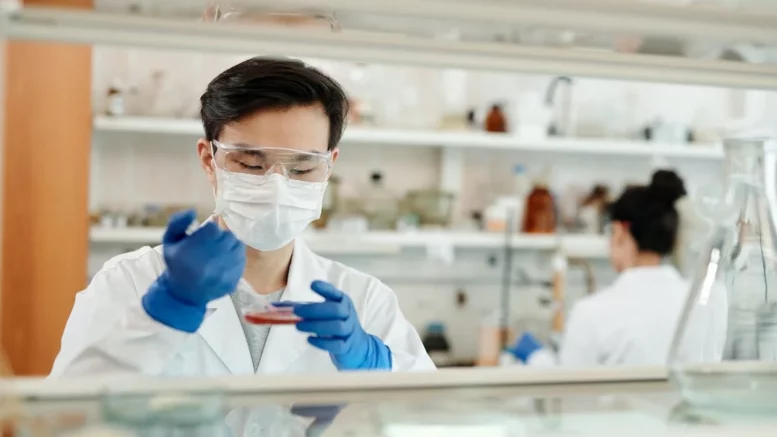The future of PRP therapy looks promising, driven by latest research and increasing interest. This innovative treatment, known for its healing properties, uses the body’s cells to accelerate recovery. Emerging studies suggest broader PRP treatment benefits, potentially transforming how we approach various medical conditions.
As research increases, we’re understanding the full scope of PRP’s capabilities, sparking excitement in the medical world and patients seeking advanced healing solutions. This article will explore the potential advancements and applications of PRP therapy, indicating a potential future for this regenerative treatment.
Emerging Research about PRP Therapy that You Don’t Know
Emerging research about PRP (Platelet-Rich Plasma) Therapy has unveiled new and exciting applications and benefits, revealing a broader scope of its efficacy in various medical fields. Here are some of the latest findings:
- Research by Zhang et al demonstrated that PRP therapy significantly enhanced the healing of Achilles tendon injuries, showing improved tendon strength and reduced recovery time in athletes.
- It is found that PRP injections, when used in conjunction with physical therapy, substantially improved pain management and mobility in patients with chronic lower back pain.
- Research by Patel and Dhillon Revealed that PRP therapy, combined with standard care, accelerated wound healing in diabetic foot ulcers, offering a promising treatment avenue for this challenging condition.
- A study by Nguyen et al. Showed that PRP treatment effectively reduced symptoms and improved quality of life in patients with knee osteoarthritis, surpassing the results of traditional hyaluronic acid injections.
- Research by Harper and Carson indicated that PRP injections might be beneficial in treating hair loss conditions like androgenetic alopecia, showing a significant increase in hair density and thickness.
Future Prospects: The Impact of Revolutionize PRP
These promising avenues mark PRP therapy’s future, heralding a new era in medical treatment where natural healing mechanisms are harnessed more effectively and innovatively.
Revolutionizing Regenerative Medicine
Recent studies highlight PRP’s role in enhancing tissue regeneration and healing. Researchers are exploring its efficacy in regenerating damaged tissues in conditions like heart disease and liver cirrhosis. PRP’s growth factors stimulate cell growth, offering hope for more effective regenerative treatments. Future research aims to harness PRP’s full potential in restoring function to damaged organs and tissues, potentially reducing the need for more invasive treatments.
Advancements in Cosmetic Procedures
In cosmetic medicine, PRP’s application in anti-aging, skin rejuvenation, and hair restoration is seeing rapid advancements. Recent studies have shown PRP’s effectiveness in improving skin texture, reducing wrinkles, and enhancing hair regrowth. Researchers are exploring its role in stimulating collagen production and hair follicle stimulation. The future of cosmetic procedures with PRP looks promising, with ongoing studies aiming to optimize treatment protocols for more consistent and enhanced results in various cosmetic concerns.
Orthopedic Breakthroughs
PRP’s role in orthopedics is gaining significant attention, especially for treating joint injuries and osteoarthritis. Recent research focuses on its ability to reduce inflammation and promote cartilage repair, offering a less invasive alternative to traditional treatments. Studies also indicate accelerated recovery post-surgery, reducing rehabilitation time. The future in this field lies in refining PRP formulations for specific orthopedic conditions, potentially changing the standard of care in joint health and recovery.
Enhancing Sports Injury Management
PRP therapy is gaining significant traction in sports medicine due to its potential to expedite healing in athletes. Research indicates that PRP’s concentrated growth factors can accelerate tissue repair, making it an invaluable tool for treating sports-related injuries like muscle strains, ligament tears, and tendonitis. This reduces recovery time, enabling athletes to return to peak performance quicker. Prospects include integrating precision medicine, where treatments are tailored based on an athlete’s specific injury.
Potential in Chronic Disease Management
PRP therapy shows promise in managing chronic conditions, particularly in healing wounds that are notoriously difficult to treat, like diabetic ulcers. PRP’s growth factors and cytokines are crucial in wound healing, promoting tissue regeneration, and reducing inflammation. As research progresses, PRP could offer a breakthrough in chronic wound management, which currently has limited effective treatments. There’s potential for PRP therapy to be combined with other regenerative technologies, like stem cell therapy, to amplify its healing properties.
Technological Integration and Customization
The future of PRP therapy lies in its integration with emerging technologies and customization. Advances in biotechnology are expected to enhance the delivery and efficacy of PRP treatments. Personalized medicine, powered by AI and machine learning, could lead to customized PRP formulations tailored to individual patient profiles and specific condition requirements. This could result in more targeted and effective therapies, reducing side effects and improving outcomes.
Conclusion
Recent advancements in PRP therapy research have broadened its applicability, demonstrating significant benefits and prospects in diverse fields like sports medicine, chronic pain management, and more. These studies underscore PRP’s potential as a versatile, effective treatment modality, promising improved patient outcomes across various medical disciplines.
